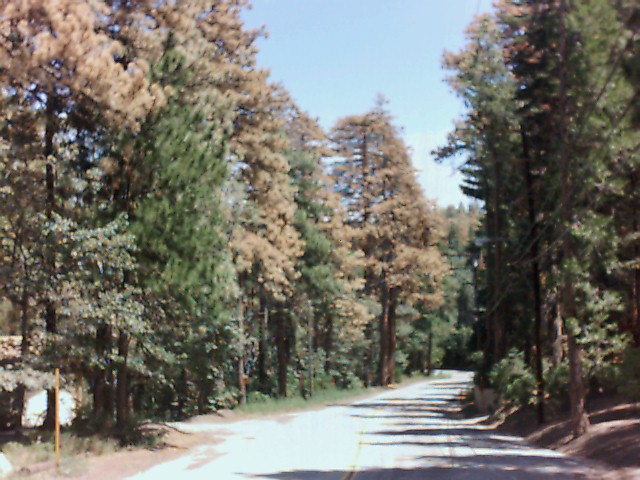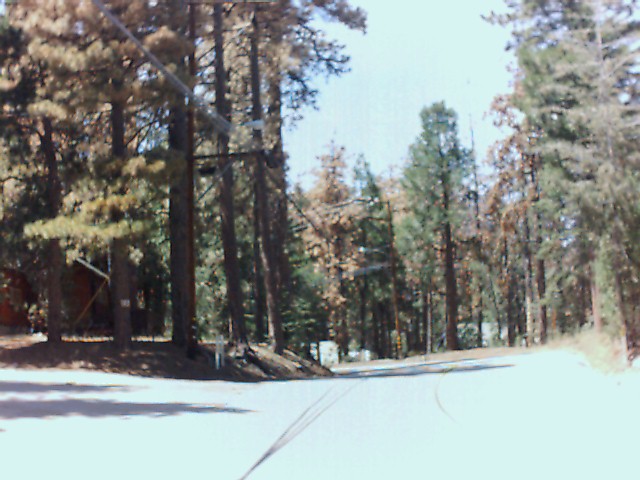

|
Bark Beetles Are Killing Pine
Trees By The Thousands |


|
Ask anyone that has visited the San Bernardino National Forest in the last few years what they remember, you will always get the same answer, "The dead trees" Thousands of pine trees are dying due to an infestation of bark beetles. I feel that the increase in the bark beetle population is due to increasing stress on drought stricken pine trees. Over the last 10 years I have monitored the climate here in the San Bernardino mountains with a combination of manual and computer controlled weather sensors. There has been a steady rise each year in the seasonal temperatures, they now reach over 100 degrees in the summer; I have also noticed a decrease in the total rainfall amounts. Also, due to increased population, air pollution is on the rise in Southern California. Bark beetles were not 'brought in' from some other region, they have evolved with the forests. Historically, beetle populations fluctuate with existing environmental conditions. Usually, the bark beetle searches for weakened or diseased trees to colonize, due to the increase of stressed trees, bark beetle numbers have increased dramatically. There are several factors that can provide a perfect enviroment for increased bark beetle populations; climate change is a major factor. These climate changes put stress on the various trees in the forest, however, the pines seems to be affected the most. Just a slight increase in pollution or temperature and/or a decrease in available water supply can cause harm to the trees. Other factors contributing to pine mortality is the lack of proper urban forest management; thinning of over-crowded trees, removal of dead or dying trees and periodic controlled burning of underbrush are important in maintaining forest health.. Fire is a very natural way for a forest to stay healthy. With the increase in population, construction within the forest is on the rise. Fire suppression is necessary to avoid catastrophic loss of human life due to wildfires. The forests of Southern California have evolved over many hundreds of years with periodic burning of accumulated organic debris. These 'healthy' fires would permit overgrown plant material to be burned away and allow new plants to become established. When the trees become overcrowded their health declines; harmful organisms use the weakend trees to multiply unchecked. A healthy pine produces 'pitch' to transport nutrients and guard against invading organisms. A healthy tree that is under attack will use its pitch to push the invading beetle out through the newly bored hole. Under close examination beetles can often be found in the resulting 'pitch tube' left on the outer bark of the tree. If a tree is drought-stressed its pitch production declines and allows beetles to bore under its protective bark. When the female beetle reaches the trees' interior she lays her eggs. When the eggs hatch the larvae eat the living inner tissue of the tree resulting in tunnels or 'galleries' beneath the bark. These galleries will slow or stop the nutrient and water flow in the tree, which can cause death. All trees that have been infested with bark beetles are weakened, this can make the tree even more vulnerable to secondary fungal attacks.
The section above shows the inner -bark area removed from a dead pine tree. Notice the galleries etched in the surface, the blue 'stain' on the bark was produced by a fungus. This section shows the outer-bark area with the sap or 'pitch' tubes. These tubes are produced by the tree as a defense against attacking bark beetles. Although there are many opinions on what has caused the bark beetle infestation, this is my own personal opinion as a 15 year resident. |
2003-2022 twinpeaksweather.com